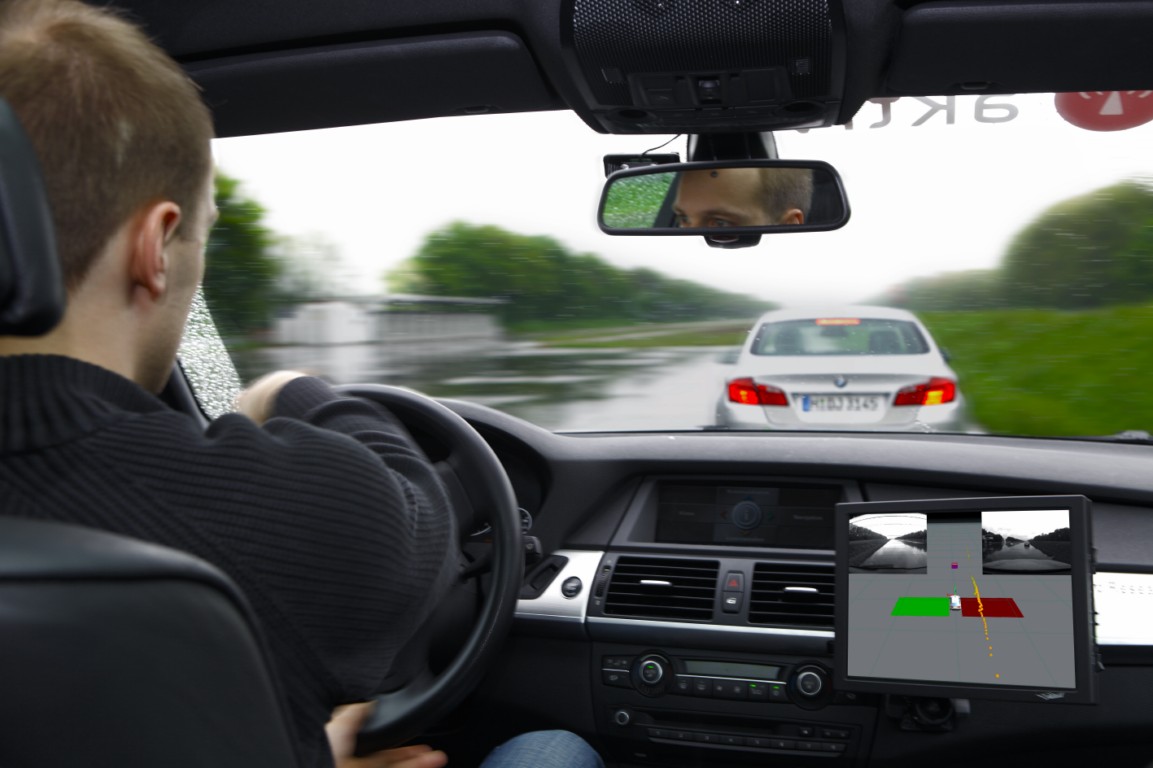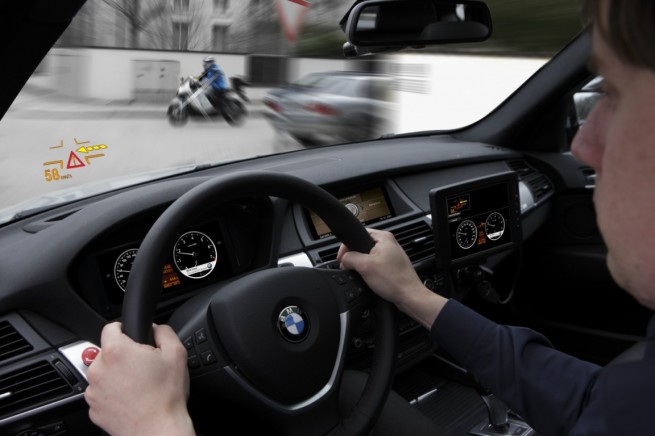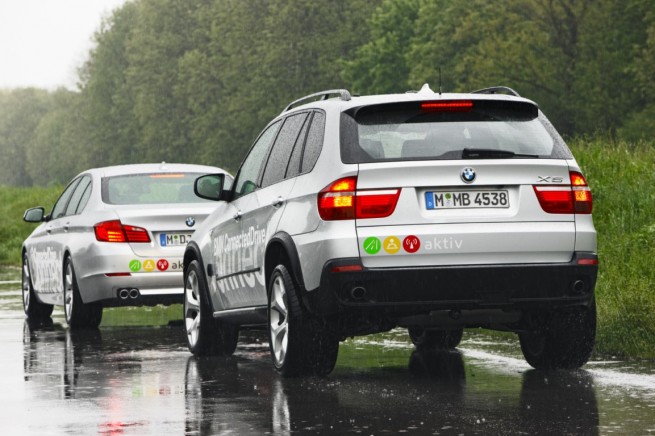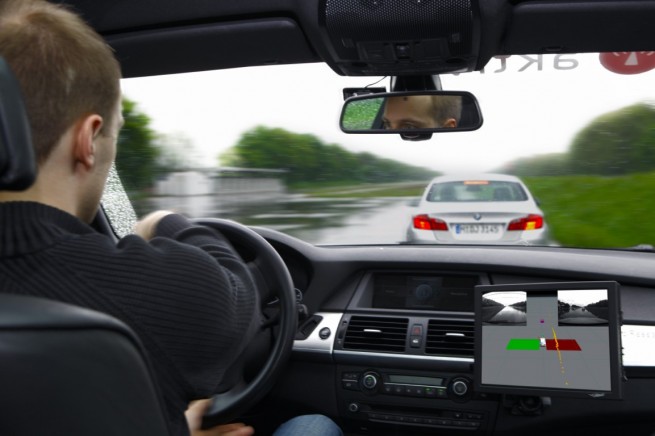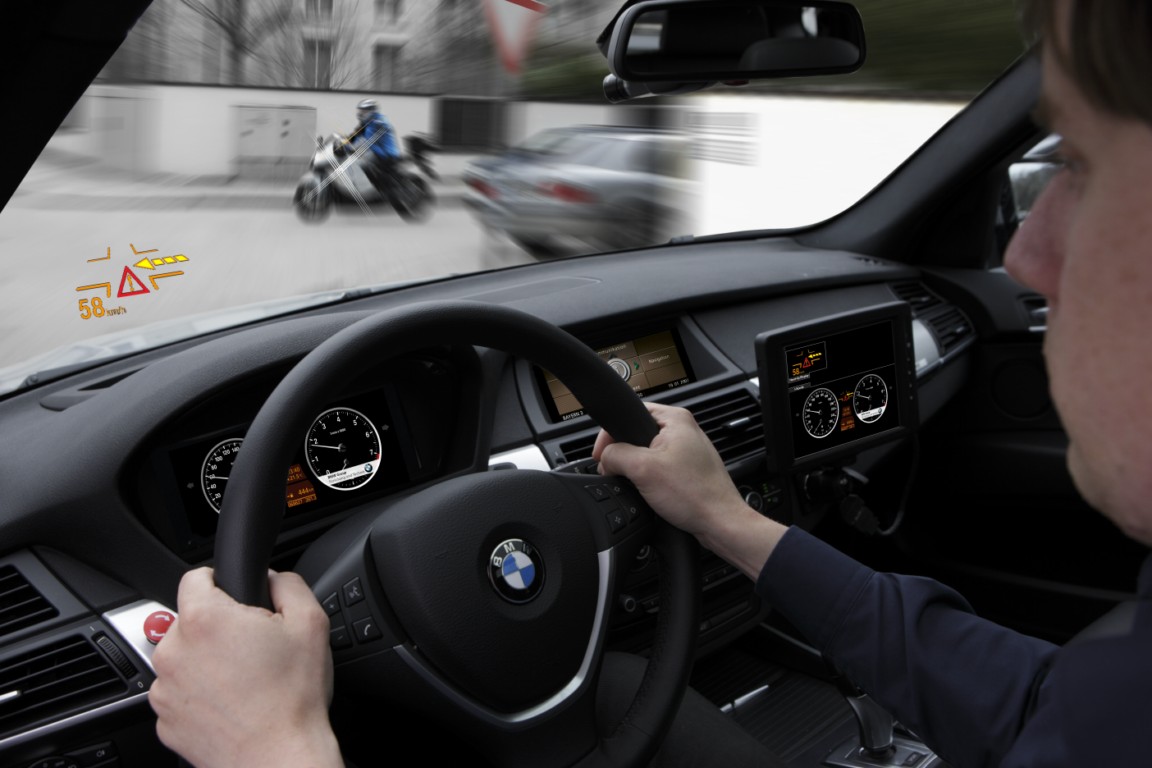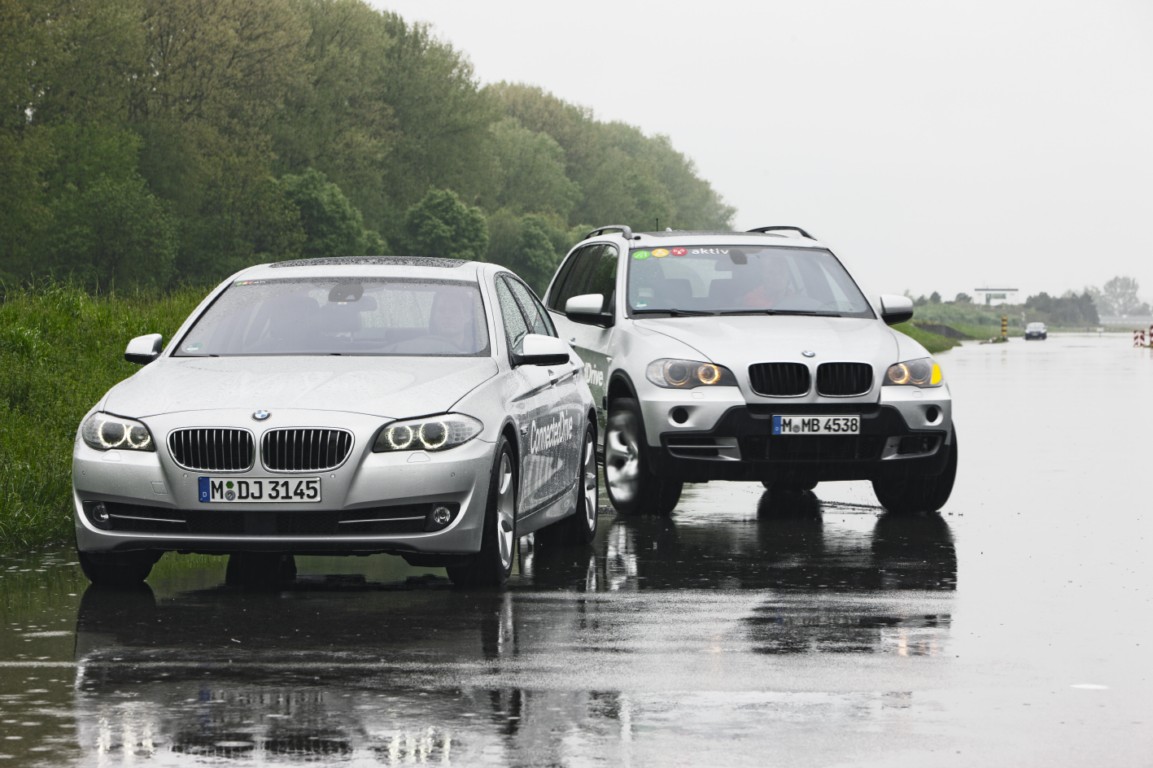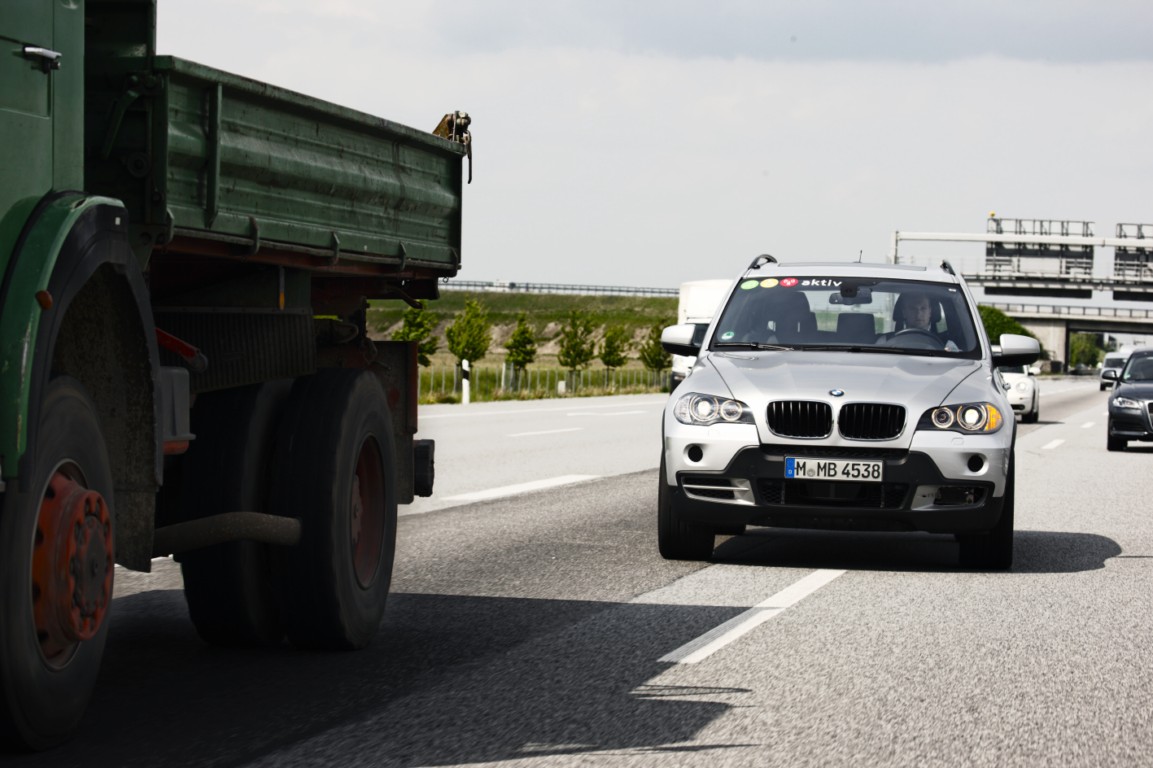Press Release: Mobility is the hallmark of a modern society and economic prosperity. For the future viability of unrestricted mobility, the traffic system must be equal to the high demands placed on it. Every traveller must be able to make each journey in the safest, most efficient and most comfortable way possible.
In order to achieve this objective, 28 partners from the automotive industry – ranging from electronics, telecommunications and software companies to research institutes and highways and transport authorities – joined forces in the German research initiative known as Aktiv. At the closing session in Mendig today, the results of the research project were presented.
Aktiv stands for “Adaptive und Kooperative Technologien für den Intelligenten Verkehr” (Adaptive and Cooperative Technologies for Intelligent Traffic).
With the aim of making traffic of the future safer and smoother-flowing, the partners involved came up with 15 subprojects to develop new driver assistance systems as well as solutions for efficient traffic management and appropriate Car2x communications. With the Active Safety project, the experts from BMW Forschung und Technik GmbH have made an important contribution to improving road traffic safety. In addition, specialists from the BMW Group brought to the Traffic Management project their insights about smooth traffic flow and developed innovative navigation functions. Also, in dialogue with industry specialists, they established the basis for acceptance and implementation of the road traffic technologies and applications.
Innovative driver assistance systems for active safety.
The best protection against accidents which a car designer can give the driver on the road is the active safety of his vehicle. “From official statistics and from our own analyses of accident databases in the project, we know that many accidents are attributable to a driver reacting inadequately, too late or not at all,” says Dr Peter Zahn, Project Manager with BMW Forschung und Technik GmbH in the Aktiv research initiative. “Every tenth of a second’s reaction time gained makes a crucial contribution to accident avoidance if a vehicle thinks for itself with lightning speed in critical situations and can itself react during a momentary lapse of attention on the part of the driver,” Zahn elaborates. The fundamental challenge, therefore, is to intervene as soon as an unexpected accident threatens in order to safeguard the driver, without at the same time “nannying” him in his attentive, independent conduct at the wheel.
That is why, in the Active Safety project, the specialists from BMW Forschung und Technik GmbH have developed an assistance system called Active Hazard Braking. This function goes beyond limiting the consequences of a collision, which existing emergency braking systems are chiefly designed to do; its aim is, as far as possible, to eliminate nose-to-tail impacts altogether. To achieve this, laser scanners on the vehicle monitor the road situation ahead and to the side, while radar sensors provide surveillance of the area to the rear. In addition, the driver’s behaviour in a particular situation is evaluated. “If the sensors recognise the threat of a collision, the driver is appropriately alerted to the situation and, if necessary, the brakes are applied fully to avoid an accident,” explains Philipp Reinisch of BMW Forschung und Technik GmbH, whose dissertation deals with Active Hazard Braking.
Another important subject for the BMW Group’s research subsidiary is Car2x communications, the name given to the exchange of data between one vehicle and another or between a vehicle and the traffic infrastructure. The focus here extends beyond cars, and within the framework of BMW Motorrad’s ConnectedRide strategy also brings motorcycles into the communication network. The data from other road users captured via the Car2x communication system provides a basis for a driver assistance system developed in the Intersection Assistance subproject. “If this assistance system discovers that the motorist giving way is probably misjudging his approach, the system warns him of a potential collision through a visual and audible signal. During the response time, the system also activates approximately 30% of the maximum braking force for one second – a palpable indication to the driver to apply the brakes himself. In parallel with this, a motorcycle with right of way deliberately attracts attention to itself: full beam headlights, additional LED side warning lights and the hazard lights are activated to broaden its silhouette. In the case of acute danger of collision the motorcycle’s horn also sounds. Its handling is not affected by this.” This vivid description is provided by Dr Felix Klanner, who developed the “Intersection Assistance” system at BMW Forschung und Technik GmbH.
Other subprojects within the Active Safety project were the development of Integrated Lateral Assistance, Pedestrian and Cyclist Safety and the crossover project Driver Awareness and Safety.
Intelligent traffic management for free-flowing traffic.
Under the label Adaptive Navigation, the BMW Group demonstrates a development aimed at bringing together different sources of information. Today, the market already has various providers of traffic information who are opening up ever-new sources of traffic data. Examples of these are loop data, Floating Car Data, Extended Floating Car Data, mobile phone data and historic traffic load curves. “However, we are only at the start of this journey and the future will bring us a wealth of new information sources. In particular, aggregators like Google and the virtual communities of Facebook, Twitter or MySpace will exploit their strengths to flood the market with information offers, some of them free of charge. But in all of this, one thing will tend to be generally overlooked: the customer’s desire for reliable, high-grade information,” explains BMW’s Dr Irina Matschke. “The challenge lies in creating a unique body of high-grade information from diverse data sources, each with a small but known value,” Matschke goes on to say. Hence, in the Aktiv project, the BMW Group has developed a fusion logic which combines the various information sources and allows them to be used by the customer through routing. In this way, as soon as the customer starts his journey, he is presented with a precise picture of what he can expect while driving and when he will reach his destination under typical conditions, but also in the best or least favourable circumstances.
Cooperative Cars provides a mobile phone-based exchange of traffic data.
In the Cooperative Cars project, specialists have been investigating the extent to which mobile phone technologies such as UMTS are suitable for the targeted real-time exchange of data between traffic management and driver assistance systems. BMW Forschung und Technik GmbH is researching the performance of these mobile phone technologies in a test vehicle as well as in simulation, and assessing how far they can be used in cooperative assistance functions such as Intersection Assistance.
The following companies and organisations played an active part in the Aktivresearchinitiative: Allianz, Audi, BMW Forschung und Technik GmbH, BMW Group, Bosch, Germany’s Federal Highway Research Institute, Continental, DaimlerChrysler, DDG, Ericsson Eurolab R&D Germany, Ford, the Hessen State Traffic Centre, HTW Saarland, IBEO, IFAK Magdeburg, MAN Commercial Vehicles, Opel, PTV, Siemens, Munich Technical University, Teleatlas, Transver, Hanover University, Kassel University, Vodafone Group R&D Germany and Volkswagen. In addition, numerous university and other research institutes, as well as small and medium-sized companies, collaborated on the project as subcontractors.
[Source: BMW ]


